Local Heroes 2015
The Independent’s Annual Issue Honoring Some of S.B.’s Finest
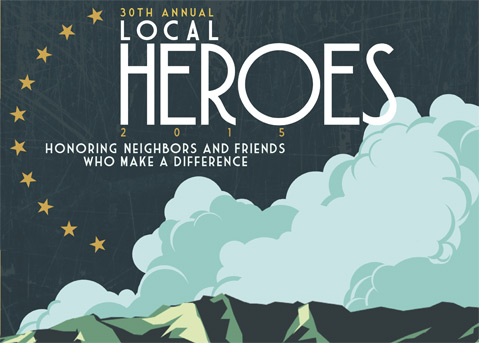
We agree with late, great poet Maya Angelou, who wrote, “I think a hero is really any person intent on making this a better place for all people.” With that in mind, we struggle each year to select our annual Local Heroes from the hundreds of nominations sent in by readers. It is no surprise that Santa Barbara County is filled with compassionate people. It’s a wonderful dilemma to have, however, and the roster this year is as strong as ever: a doctor who went above and beyond to treat veterans; harbor patrollers who tracked down a man at the Channel Islands to get him his kidney replacement; a woman who has devoted her life to animal welfare and now helps older or infirm folks pay for vet bills; and an art purveyor who continually keeps the community standards of visual aesthetics high. Those are but a few of the heroes who grace the following pages. Read on for their inspiring stories.
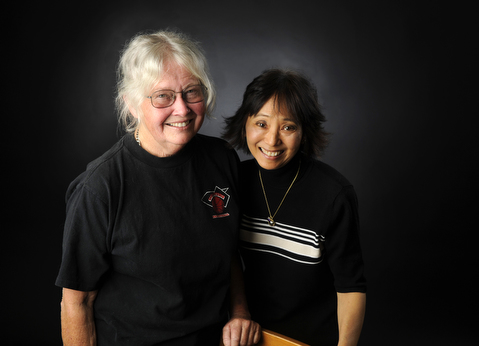
Susan Williams and April Ueoka
Friends of the Library
Once known as the nomadic bookshop, the Friends of the Carpinteria Library Used Book Store — run by Susan Williams (pictured left), April Ueoka, and their team of dedicated volunteers — once sold tomes on the Carpinteria Library’s front lawn. Now staffed by some 70 volunteers, whom Williams calls “the engine that drives the whole machine,” the nonprofit bookstore donates all its proceeds to the neighboring Carpinteria Library.
Williams, a book lover who majored in English at San Diego State University, has been involved since the ’70s, shortly after the Friends of the Carpinteria Library’s 1967 founding and before its bookstore found a permanent home in the Seaside Building on Carpinteria Avenue in 2010. These days she manages the back of the shop — she sorts through the estimated 4,000 books donated per month, answers volunteers’ questions, and stays calm in the face of every mini crisis. On any given day, Ueoka can be found at the front desk, which is frequented by regulars. “It’s like the Cheers bar,” they agree.
A longtime Carpinteria resident, Ueoka first volunteered 15 years ago by doing computer work for the store’s previous manager. Since then, she’s been “hooked” to the hectic and rewarding condition of monitoring the local landmark. Ueoka remembers receiving phone calls from volunteers at home her first day on the job as comanager.
Although every day is different, among their most memorable moments on the job has been receiving a few boxes of books in the mail from Vermont. People remember the bookstore from their vacations to the beach town, Williams said, and they come back with their campers full of books to donate. Looking to the future of the Friends of the Carpinteria Library Used Book Store, Ueoka and Williams urge their community “not to give up on paper books” — because, as Williams says, the bookstore “really is a splendid place.”
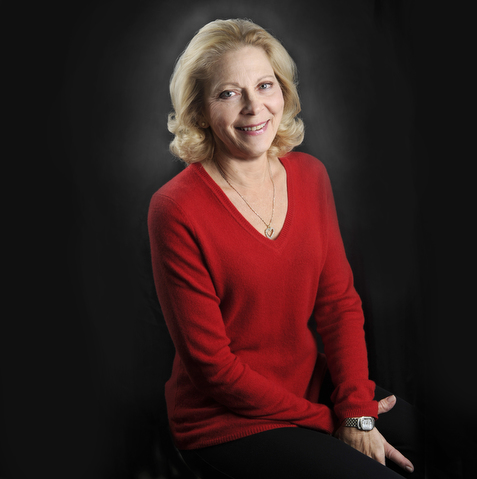
Genevieve Geyser
Christmas Crusader
For Genevieve Geyser, Christmas starts in July. That’s when she begins writing grants to support the Old Mission Santa Inés Christmas Basket Program, which provides Christmas gifts, toiletries, staples, and a week’s worth of food — including two fresh chickens from El Rancho Market — to more than 150 families in need every year. After selecting recipients, Geyser seeks families to “adopt” them. School classrooms and businesses also adopt families, filling decorated lettuce boxes with gifts. “People don’t realize what poverty really is,” said Geyser, who has volunteered for the program the last nine years, the last six as head coordinator. “They think it means only one TV or two TVs.” But in reality, she added, it often means not even having toothpaste.
Running the program offers Geyser an intimate knowledge of poverty in the Santa Ynez Valley, but it also gives her a deep understanding of the community’s largesse. Donors, funders, volunteers, and adopters number in the thousands.“I have never ever seen a community like this. You just ask, and they show up,” said Geyser, a military brat who lived in locations all over the country before settling in Santa Barbara County. She’s especially gratified when school classrooms, such as those at Santa Ynez Valley Charter School, adopt families because it teaches kids to give back.
Adopters receive a card with the age and gender of each person in their adopted family, but Geyser also adds notes that hopefully help personalize the gifts. One of Geyser’s most memorable gifts was a bicycle for the autistic daughter of a single father. He was sobbing so hard from joy that he couldn’t drive away from the Mission parking lot. Aside from the presents, the biggest gift may be allowing parents to provide Christmas morning for their children. “Christmas, to me,” said Geyser, “is always the most magical time of year.”
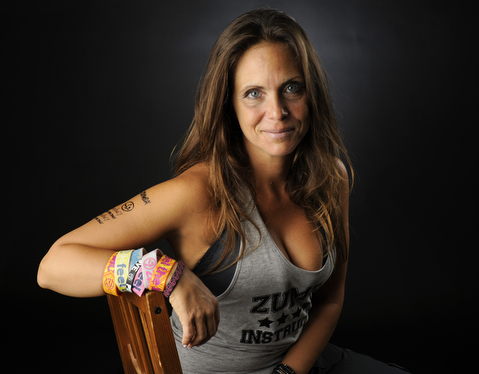
Josette Tkacik
Dancing Queen
Josette Tkacik, one of the top Zumba instructors in the world, became so because she couldn’t walk. Diagnosed with rheumatoid arthritis, the lifelong dancer was in debilitating pain and was rendered immobile, with the prognosis likely permanent. All that she had worked up to in life was seemingly gone. “I was in a position where I lost everything. I couldn’t even brush my teeth without the help of my husband,” she said.
The doctors prescribed a rigorous battery of pills and treatments, but Tkacik sought an alternative cure. Improbably, and in spite of her pain, she decided to teach a dance class, for dancing was the only thing that could take her mind away from the disease. Bit by bit, she regained her mobility, and her small class, starting with three students, grew. Now, they number in the hundreds, and hers are among the most well-attended Zumba classes around.
Tkacik doesn’t talk during her classes, preferring instead to let the music speak for itself. The results are evident: bounteous displays of joy and exuberance, tears of relief and freedom. It’s more than just a booty-shaking time, Tkacik said; it’s a no-judgment zone where dancers have the freedom to be, and love, themselves.
Zumba, she said, is a multidimensional workout that provides people with the tools to true self-understanding and self-fulfillment. “We are so much more than our bodies. … We are so much more than the false premises” that we build our lives around — the negativity, self-doubt, and competition, she said. “Your value has to be your relationship with who you are and if you’re allowing yourself to be who you came here to be.”
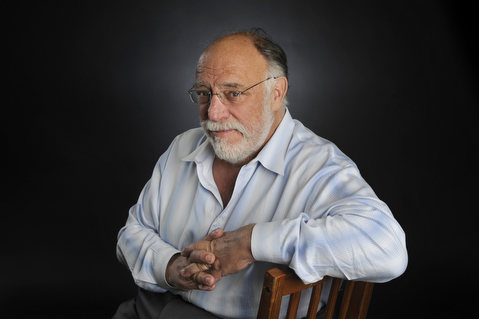
Frank Goss
Gallery Owner
A lot of the time and energy expended in debating the life benefits of art could be saved if the people involved in those discussions would just sit down with Frank Goss and observe. Here we have an unusually fine example of what happens when an instinctive appreciation for the value of craft is given the opportunity to saturate someone’s personality over the course of a lifetime. Goss has proved that running an art gallery can be a wonderful way to bring people together and to build the values of civility within the resulting community. “My life would not be what it is without Frank,” said Susan Bush, a longtime employee of the Sullivan Goss gallery, and she’s not just talking about her job. “Frank taught me to be passionate about everything and to be compassionate towards everyone. Frank acknowledges everyone, and that’s a rule for the business, to show the same fundamental respect for all the people who walk through the door.”
This rule of respect turns out to have been a brilliant business strategy, as Sullivan Goss is without peer as an institution generating interest in and revenue for the living artists of Santa Barbara, as well as for the estates of many great creative Americans who came before them. “It’s more than just a viable business,” said community arts organizer and Sullivan Goss employee Nathan Vonk. “It’s an institution, and I can’t imagine how we would get along without it.” Former employees of the gallery can be found all over the map, and many of them have gone on to become leaders in the art world. What unites them is a debt of gratitude to this lovable figure who continues to give unstintingly of his time, wisdom, and most of all, his permission to go out and become the best that you can be.
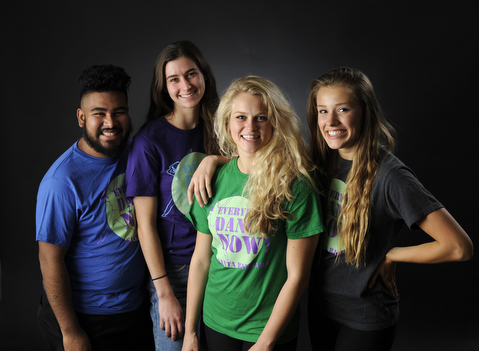
Everybody Dance Now
Movers and Shakers
Nine years ago, Pablo Gatica heard music coming from inside the Harding Elementary School auditorium and wandered in to find a group of kids dancing to hip-hop. Just 10 years old, he marched right up to the teenage teacher, Jackie Rotman, and said, “I can do that, too.” So he joined the class. Fast-forward to today; Gatica teaches dance at the same elementary school.
What began a decade ago as four teenage friends teaching hip-hop to Santa Barbara elementary kids has blossomed into an organization spreading the power of dance in eight American cities. Everybody Dance Now! (EDN!) — the brainchild of Rotman, who was just 14 when she founded the program — partners with area organizations such as Girls Inc. and the Boys & Girls Clubs to offer 15 free dance programs to low-income students across town. Nationwide, more than 50 classes serve 6,000 disadvantaged youth.
“Everybody Dance Now is kind of trying to reconfigure school education,” Gatica said. He added that dance creates community. As a kid, “I was very shy, but when it came to dance, I was very comfortable and came out of my shell,” he said. He sees himself in his students. “Humans are born artists,” he added.
Kelli Forman, who is the EDN! director, sometimes works with troubled kids in her classes. At times, Forman said, she sits everyone in a circle before she starts class in attempt to alleviate any angst. Forman often receives long messages from parents expressing their gratitude. “Dance is a common language,” she said. “That’s what keeps us going.”

Marcel Meier
Court Liaison
People meet Marcel Meier when their lives have fallen apart, when dependency and mental illness have swept them into the criminal justice system. The lucky ones end up in Meier’s office instead of jail. He tries to keep it that way.
Officially, he is known as the court liaison for Santa Barbara County’s Clean and Sober Treatment Review Court. Meier, himself a former addict, helped create this program and make it a model of success for other constituencies — veterans or those with domestic issues.
Every Tuesday he takes his “clients” into a courtroom. In these courtrooms, there is a vast economic and lifestyle chasm between the well-dressed, professional judge, bailiffs, attorneys and clerks, and the ragtag defendants, many of whom are literally fighting for their lives. Meier works with grace and efficacy between these two realities. He is hard-nosed and gives tough love to the defendants, but in court he presents them for their successes and their ongoing work through their problems.
If they haven’t been sober, Meier remands them to jail. They get handcuffed and led away, right there in the courtroom. But if they have, they get gold stars and congratulations from the judge and rounds of applause. Both in front of the judge and in his individual meetings with defendants, Meier presents a steady blend of cheerleader and drill sergeant.
At a recent graduation ceremony held for those who had made it through Meier’s program, one of his cases stood in front of the assembled audience and said, “I never thought I would say thank you to Marcel Meier.” But then she did. She looked at him and said, “Thank you, Marcel.”
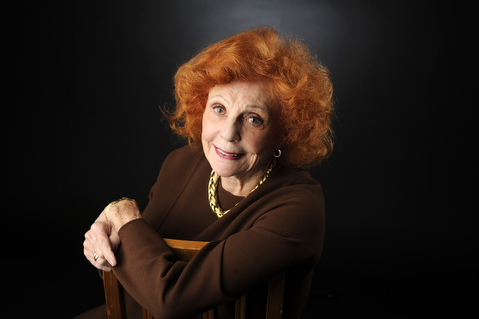
Lady Leslie Ridley-Tree
Versatile Philanthropist
Keeping track of all the generosity and leadership lavished on our community by Lady Leslie Ridley-Tree could potentially keep a staff of journalists working full-time. One writer would cover what she’s done for the arts, such as endowing Westmont College’s Ridley-Tree Museum, or lending her Barbizon design collection for an exhibition there this January. Another would focus on her leadership role as the chair of the UC Santa Barbara Foundation Board of Trustees, and would also interview some of the hundreds of UCSB students who have benefited from the scholarship program she established there. And then a health reporter would have to chase her from Goleta, where she’s endowed the state-of-the-art Cottage Health Ridley-Tree Center for Wound Management, back to Santa Barbara, where a new Cancer Center is being built by Sansum Clinic and the Cancer Foundation thanks to her initial gift of $8.2 million.
One thing they would not have to worry about is spotting her in a crowd. Lady Ridley-Tree’s distinctive mane of fiery red hair is as familiar a sight at major events in Santa Barbara as Roger Durling’s eyeglasses or John Palminteri’s moustache. She and her late husband, Lord Paul Ridley-Tree, have been recognized not only here in this city but also on the national level as distinguished philanthropists since the early 1990s, and more than 20 years later, Lady Ridley-Tree shows no signs of slowing the pace. Although she recently claimed with characteristic modesty that she had “no idea what it means to be a hero,” she said she would be willing to join the rest of the honorees at the Local Heroes luncheon in order to hear their stories and find out. “It’s a privilege to be here in Santa Barbara at a time when things are needed,” she said, “and a blessing to be able to help provide some of those things.”

‘Jimmy J’ Jennings
Apparel Artist
About a decade ago, a new wave of pop art designs began crashing onto the Santa Barbara scene. California’s bear flag surfed across T-shirts, Isla Vista reggae bands and Halloween celebrations waved onto flags, and neighborhoods, from Ellwood to the Mesa to Butterfly Beach, cruised upon trucker hats. The culprit? A Mesa-raised, UCSB-educated, self-trained artist known to most simply as “Jimmy J,” whose decision to ditch day-to-day sales work in order to follow his heart has drowned California’s beach and music scenes in quirky yet distinctive apparel.
“I am passionate about creating art and seeing people rock it!” explained Jimmy J, who started making surfing bear shirts for various coastal cities in about 2005, moved onto Isla Vista bands soon thereafter, and now makes mostly hats out of his designs. “I am forever grateful when I leave the house and see somebody wearing something I designed. It’s not something on a wall or shelf of a house that few will see, but worn with pride for many to see because it captures an essence of something that person loves, often something I love.”
The line, which he sells through ivcomics.com, does help pay the bills for Jimmy J, who has a 2-year-old son with his wife, a nurse. “I feel blessed,” he said. “I found a niche.” But it’s the enthusiasm of others that cash the biggest checks. “I don’t believe I am a great artist, but I believe I am good at reaching the heart and soul of many artistically,” he said. “When I see that stoke in their eyes and the smile on their face, that fuels the creative fire within me.”
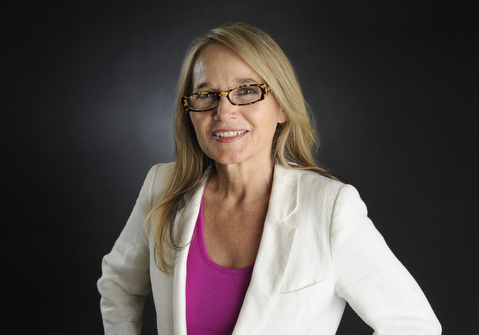
Suzanne Riordan
Mental-Health Advocate
Suzanne Riordan might easily have shriveled up and blown away in November 2005. That’s when the body of her 23-year-old son, Ian, was found dead of a drug overdose. Ian long battled mental-health and addiction issues and was looking at prison time, having violated the terms of his probation with a flamboyant 18-drink relapse. Rather than surrender to grief, Riordan reached out and met with other mothers in her same boat. “We all had adult children being treated like criminals when they needed residential treatment,” Riordan recalled.
Since then, Riordan has emerged as the sustaining force behind what’s become Families Act!, an organization banging the gong long and loud on behalf of mental-health and incarceration reform. “Because we make so much noise, we have access to the Sheriff, the District Attorney, and the head of the county’s Alcohol, Drug and Mental Health Services division,” Riordan said. Since Ian died, there have been no fewer than six county mental-health directors.
Riordan and a core group of about 15 activists managed to insert themselves into the bureaucratic DNA of that reform process with the creation of the Housing and Recovery Action Team. Mostly, the group makes its presence felt advocating for residential treatment facilities before the county supervisors. When Sheriff Bill Brown wanted to renew the contract for the private company providing mental-health treatment in the county jail, Riordan and crew issued a scathing indictment of the services rendered. That contract renewal remains in limbo.
Riordan and Families Act! also help those in need navigate the labyrinthine maze of mental-health-care services available locally. The public policy debate over drugs, mental health, and incarceration has changed dramatically for the better in the past 10 years. Even so, Santa Barbara has not expanded its residential treatment options. Until it does, Riordan won’t be going anywhere.
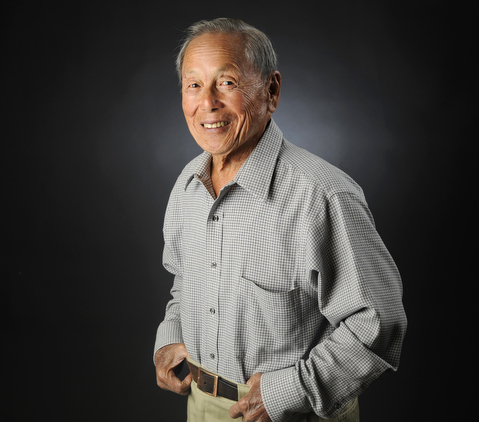
Rodney Chow
Carpinteria Farmer
“We don’t farm like most people,” explained Rodney Chow with a smile. “We encourage the weeds; we try anything. … We go for quality over profit here at Bright Spring Ranch.” At 86 years young, this retired civil engineer and former Oxnard real estate agent for low-income families is in the midst of a most unexpected third act in life. “If I had it all to do over again, I would never have studied engineering. It would have been farming from the beginning. You just meet the best people,” confessed Chow.
Chow has tirelessly turned his five-acre Carpinteria parcel into an Eden of fruit trees grown from seed, rare potted flowers for sale, and assorted hard-to-find Asian vegetables. Along with his wife, Joy, he has been a staple at the Thursday and Saturday editions of the Santa Barbara Farmers Market for the past decade; their sought-after small-batch fruits and veggies (think variegated kumquats, Fuji apples, pomegranates, and Asian winter melons) are often accompanied by an original recipe and story or two from Rodney. “We are just trying to enjoy life and bring something to market that is hard to find anywhere else,” he said.
Though his father was a pear farmer in the Sacramento area in the early 20th century, Chow wasn’t necessarily thinking about farming when he bought his land in Carpinteria nearly two decades ago. It was simply going to be a place to retire with some room to roam. However, when the economy tanked, he looked to his past for inspiration. The fruit tree planting began almost immediately, and any notions of “retirement” went on permanent hold. “We have just been learning as we go,” said the proud father and grandfather. “There have been lots and lots of mistakes, but my motto is ‘Don’t cry over it.’ So we just keep going and trying new things.”
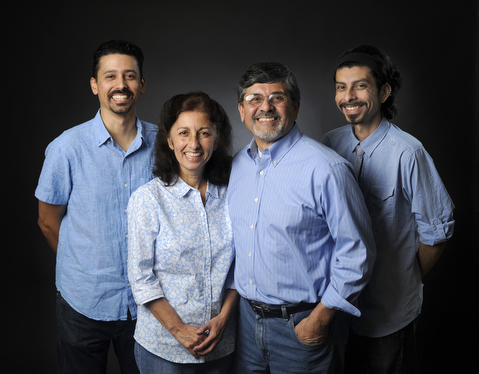
The Muñoz Family
Auto Angels
For the past 35 years, David and Angie Muñoz have made Muñoz Auto Repair the gold standard for service, and a generation of Honda, Acura, and Toyota owners in Santa Barbara will not take their vehicles anyplace else.
David and Angie are too humble to consider themselves local heroes. But as any small-business owner will tell you, it’s not easy to make a go of it year after year; it takes commitment and focus and grit to build a reputation and then maintain it through good and bad times, recessions, and fierce competition. David and Angie, both Santa Barbara natives, built their business on the simple foundation of honesty and integrity.
Running a successful business, raising two sons, and continually striving to do the right thing by their customers in a culture obsessively focused on the next big or new thing is admirable. Long before it was fashionable or mandated, Muñoz’s Auto Repair went green to reduce waste and impacts to their native city.
Trust is not easily gained in the auto industry, they acknowledged, adding that they are proud to be able to provide peace of mind and stability to their customers. And with sons D.J. and Peter now working alongside their parents, it appears that the business David and Angie built will last another generation.
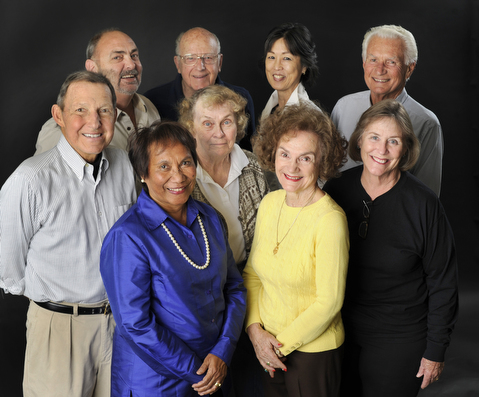
Santa Barbara Conservancy
Architectural Preservationists
Once a month for two hours, 12 movers and shakers from Santa Barbara’s legion of architects and preservationists meet at the historic Pico Adobe to plot how to preserve the defining slice of the city’s architectural past. The group, the Santa Barbara Conservancy, was summoned into action in 1998 by the quietly dignified John Pitman, then one of Santa Barbara’s leading architectural lights. Pitman has since died, replaced by architect Don Sharpe. “The idea is to foster an understanding and appreciation for what we have,” explained Sharpe, referring to the town’s signature red-tile, white-stucco architecture that sprang up in the aftermath of the city’s 1925 earthquake.
At that time, Santa Barbara’s leading citizens formed an outspoken, determined conspiracy to rebuild downtown as an exaltation of a Spanish-themed golden age that may or may not have ever existed. To an exceptional degree, they succeeded. “There’s nothing like it in the world,” marveled Sharpe. To that end, the Conservancy is about to unveil the second edition of the tome Santa Barbara: El Pueblo Viejo, featuring photographs of 250 downtown structures built in the spirit of that time. Included will be basic information about the buildings, the architects, and stories of how they came to be.
Conservancy members lobby City Hall on behalf of certain projects and against others, maintaining an assiduously low profile all the while. They’re also intent on celebrating the cornucopia of iconic stonework that sprang up in the early 20th century, principally along the city’s Riviera. In 2009, the Conservancy published former UCSB professor Dick Oglesby’s scholarly love song to what they created, Stone Architecture in Santa Barbara. When asked whether this style of architecture gets too much love, Sharpe referenced the Santa Barbara courthouse in reply. “You can’t ever give the courthouse too much love and attention,” he said. “It’s just not possible.”
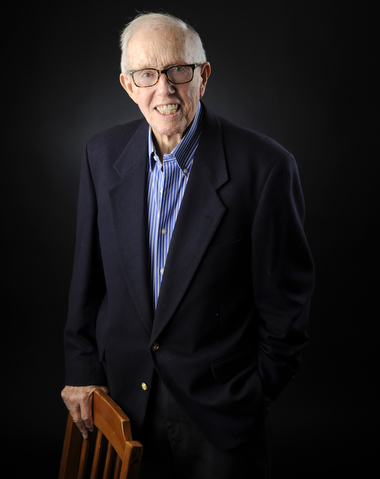
Don Bushnell
Nonprofit Consultant
After 88-year-old Don Bushnell retired earlier this year, he filled his free time with more of the same work that’s earned him high praise in philanthropic circles nationwide. He helped launch the Satori Group, a consulting firm that provides long-range planning to nonprofits. That’s an important niche in Santa Barbara, home to more nonprofits and foundational money pots than any other same-sized city in the country.
Bushnell found his path in the 1960s and ’70s, helping inner-city kids in Chicago, Philadelphia, and Watts — which earned him special commendation from the U.S. Office of the Vice President — before joining Santa Barbara’s Fielding Graduate University, where he cofounded the Institute for Social Innovation. Much of his professorship involved teaching students how to apply cutting-edge social theory to real-world situations, such as helping reinvigorate the Community Environmental Council to its core mission. Bushnell and his students also expanded the leadership and outreach of Court Appointed Special Advocates (CASA) of S.B. County, which moves kids from the juvenile court system to safe and stable homes.
Bushnell doesn’t consider such work an act of problem solving so much as an effort to build on a nonprofit’s existing strengths while refocusing on its original bull’s-eye. In that respect, his lifelong work harks back to a childhood in field archery — a sport he’s taught to troubled teens, as well, Bushnell said. “Archery teaches patience and self-reflection and imaging the flight of the arrow to the target.”
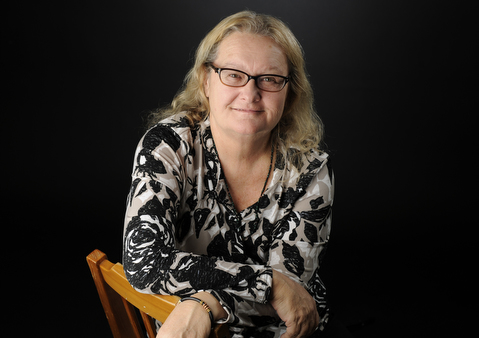
Lee Ann Knodel
Teacher Extraordinaire
“Show up, be on time — 15 minutes early — stand up straight, don’t chew gum, don’t look at your phone …” Sound like your mother? Well, that’s Lee Ann Knodel, a k a Ms. B (because she’s as active as a bumblebee), majordomo of the Dons Net Café, headquartered at Santa Barbara High School. From its beginning as a tax-accounting computer class in 1993, the Net Café has become a hugely effective learning tool. Ms. B’s students develop their own businesses and are tasked with running them, but what they learn is compassion, resilience, and confidence.
Their interests span developing recycling-bin lids with Jane Goodall’s Roots & Shoots (for which Ms. B won a leadership award and got a kiss from Pierce Brosnan); funding activities — like representing their school at entrepreneur competitions nationwide by creating T-shirts for community groups; hosting a video-game tournament and in-class sessions; and marketing products for nonprofits in South Africa, Jakarta, and Paraguay to alleviate poverty.
All these ventures require business plans, marketing, accounting, and occasionally convincing the school to let them do it. Ms. B lets the teens handle it all. And they do it well, as their awards shelf shows. About 96 percent of her graduates receive college scholarships, and a few have full rides to schools such as UC Berkeley and Georgetown University. Ms. B is always there to help with résumés and applications (they already have interview skills) for jobs to keep body and soul together after they graduate.
And the many mentors who come from the business world to teach their skills to her class? “I’m like Tom Sawyer,” Knodel said with a grin. “Do you want to come help me paint a fence?”
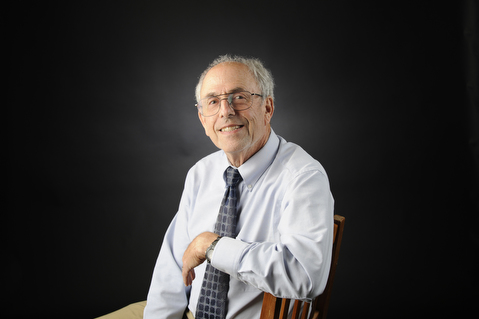
Dr. Joseph Blum
Veterans’ Guardian Angel
During the height of 2014’s CNN exposé that found dozens of army veterans died waiting for care at Veterans Affairs facilities in Phoenix, 10 area veterans paid a visit to the small Calle Real clinic to drop off cakes to show their appreciation for the care they received.
“We’re not perfect,” Dr. Joseph Blum said modestly, “but it’s a wonderful family.” Blum, who is married to former Santa Barbara mayor Marty Blum, recently retired from the VA clinic after serving area veterans for 32 years. In person, 74-year-old Blum is a charmer with an infectious smile whose sincerity is immediately apparent. His patients praise him for his relentless effort. During his career, he would spend time with patients during the day and then several hours reviewing test results and finishing paperwork at home at night.
But Blum’s heroism transcends professional excellence and could also be attributed to his edginess. Particularly during the last decade of his career, Blum sent letters to the VA higher-ups in Los Angeles to speak his mind. “I was the lowest level, but they listen to physicians,” he said. As such, Blum advocated for years what he called a Mayo Clinic at the VA. In September, the VA built the Patriot House, a 36-bed facility where veterans could stay while they were seen at the nearby West Los Angeles hospital. At a regional yearly meeting, a high-ranking VA executive acknowledged the Santa Barbara doctor for inspiring the project. “It was one of the highlights of my career,” Blum said.
Blum could have retired nine years ago, but living in a post-9/11 world is perhaps what kept him working at the VA during the last decade. “I told my patients, ‘I used to like working with you guys, but now I am honored to work with you,’” he said.

Diana Basehart
Animal Advocate
A formidable voice for animals over the past four decades, Diana Basehart shows no signs of slowing down. She and her actor husband, the late Richard Basehart, were championing the rights and well-being of four-legged critters before it was chic to do so. The couple founded Actors and Others for Animals in 1971, which was one of the first organizations to promote spay and neutering of dogs and cats. The organization exists today and touts celebrities such as Betty White and Lily Tomlin as members of the nonprofit.
After her husband passed away, Diana left Los Angeles for Santa Barbara to retire from public life, but activism continued. Last July, she led the March of Mourning for Davey, the miniature pinscher who was sadistically abused. “We are marching to call attention to the horror of violence,” she told The Santa Barbara Independent prior to the event. Wearing black armbands, a crowd of 800 showed up for the peaceful protest. Another project Basehart would like to see take hold is the creation of a database of convicted animal abusers. “We can find out very quickly who is a pedophile,” she said, but there is no such catalog to protect animals from being adopted by abusers.
In 2013, Basehart started the Diana Basehart Foundation, a nonprofit that provides assistance to pet owners who cannot afford veterinary care. “Too many times an elderly person has no choice but to give up their pet (sometimes their only friend) just because of financial strain,” Basehart states on her website. “That was heartbreaking and unacceptable to me.” With cofounder Lynne Shaw and volunteers, Basehart and crew continue their crusade. “In three years we have helped 600 animals,” she said.
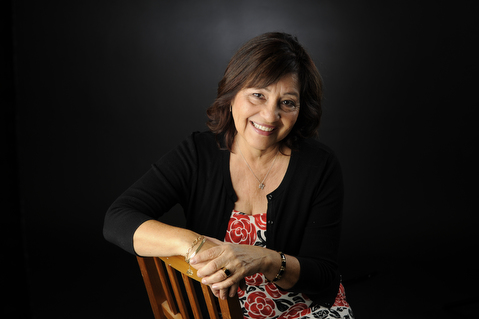
Irene Macias
Library Dreamer
Sometimes nice matters. So does passionate, diplomatic, gracious, and energetic — all adjectives used to explain how Irene Macias, who just stepped down as head of the Santa Barbara Public Library System after nine years at the helm, helped spearhead a $4.7 million private-public fundraising campaign to revamp the downtown library basement into the most inviting place for toddlers and new readers. That Macias achieved this while her department weathered recession-induced cuts and layoffs makes the opening of the new kids’ wing this year even more remarkable.
Growing up in Pico Rivera — her mom a Mexican immigrant and her father a onetime ice deliveryman — Macias was a precocious and avid reader, gulping down every Nancy Drew book on her library’s shelves in record time. In her youth, she wanted to become a private eye and then an investigative reporter. Ultimately, Macias became a reference librarian, a little bit of both. In 1997, she moved to Santa Barbara, taking a job with the library system. In 2006, she became chief executive of a library system with 1.5 million visitors a year.
Two years later, the recession hit with ruthless cruelty. Programs were gutted. Even so, Macias kept the dream of a new children’s wing very much alive, hiring a private fundraiser and creating a nonprofit to help get the job done. But it was Macias who wowed philanthropic heavyweights like Anne Towbes and Peter MacDougall by dint of her passion, belief, and commitment. With those two onboard, other major donors dove in headfirst.
In a government bureaucracy bursting with media-centric department heads, Macias always kept a low profile. And where others talked about public-private partnerships, Macias made it happen. The results speak for themselves. The grand opening of the children’s wing was an all-day celebration, drawing a diverse crowd of enthusiastic kids and parents. And in the first month, the children’s wing experienced a 40 percent increase in books checked out. Nice work.

David Hopkins
Street-Smart Social Worker
Living on the streets as an addict is hell, said David “Hopper” Hopkins. “People don’t understand how dark it can be.” He would know — he was there for 11 years. Hopkins moved from New York to Santa Barbara in the mid-’90s to fish but quickly found himself homeless, his money spent on drugs and alcohol. He camped along the train tracks and lower Milpas Street, where he racked up 497 open-container citations and survived two overdoses.
Hopkins credits his guardian angel, outreach worker Stacy Donaldson, for saving his skin by getting him into treatment and housing. Since then, Hopkins has gotten clean (nine years this March) and become a credentialed social worker, partnering with a galaxy of homeless support organizations such as CARES, Common Ground, Doctors Without Walls, Families Act!, and others. He speaks at the jail and sponsors a number of recovering alcoholics. He also quietly walks the Milpas corridor every week to speak with those in need about the possibilities that exist beyond their struggle.
Hopkins possesses an understanding of the pain that comes with having no home but lots of demons. So where other outreach workers sometimes fail, he often succeeds, connecting with the homeless with a degree of empathy and understanding that builds trust and funnels them toward the proper care.
Watching those he’s helped stay on the right path is one of Hopkins’s great joys. A man he ushered off the street recently celebrated one full year at his El Carrillo apartment. “Now he gets to spend the holidays with his family under a roof,” Hopkins said. “When you see that glimmer in someone’s eye — that you’re giving them hope — that’s the paycheck,” he added. “That’s what it’s all about.”
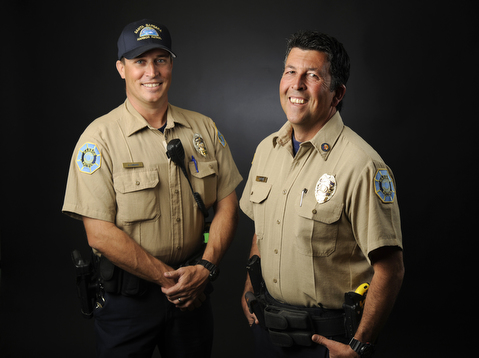
Anthony Lombardi and Jan Martinez
Santa Barbara Harbor Patrol
Santa Barbara Harbor Patrol officers never know what the day will bring. Last February they helped douse a catamaran fire before it spread through the marina. Not long before that, they saved two people whose motorboat sank nine miles offshore. And in recent years, they’ve apprehended burglars, responded to a bomb scare, and even rescued a spooked show horse that swam out to sea. So when officers Anthony Lombardi (pictured left) and Jan Martinez got orders to track down a boater in need of a kidney, they didn’t blink.
It was 1 p.m. on May 23 when the man’s wife called Harbor Patrol to explain a donor kidney had just become available for her husband and that he needed to get to the hospital right away. Problem was, the man was sailing somewhere along the south side of Santa Cruz Island, and he was unreachable by radio or phone. Lombardi and Martinez bucked through heavy seas and 20-knot winds in their small Harbor Patrol boat to the islands and located their man at Frys Harbor. They got him back to Santa Barbara by 4:45 p.m., and he was at the L.A. hospital by 6 p.m. for the successful operation.
“It was great,” said Lombardi. “Definitely one of the highlights of my career.” A relatively new hire, Lombardi is one of 11 guys and gals who make up the Harbor Patrol. They’re all trained as EMTs, firefighters, law enforcement officers, lifeguards, animal rescuers, and, of course, skilled mariners. Their jurisdiction is typically from Leadbetter to East Beach and a few miles offshore, but they fan out farther if needed. And though much of the squad’s day-to-day duties may fly under the radar, the work is nonstop, with responses to more than 1,800 calls a year. “I feel we have the finest harbor patrol in the state,” said Harbor Operations Manager Mick Kronman. Lombardi agreed: “Everyone who works here is a hero.”
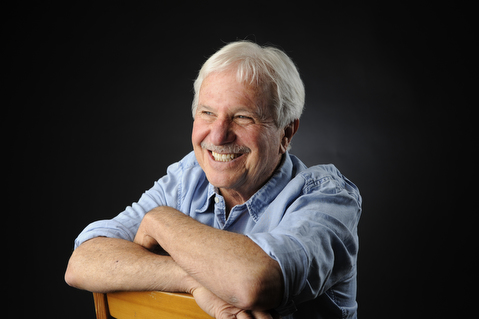
Gary Krasnoff
Generous Spirit
At first, Gary Krasnoff had no interest in being named a Local Hero. “This town is so full of real heroes; I would be fraudulent to accept it. I mean, practically everyone in my life is a hero of some kind,” said the 68-year-old father and grandfather. However, for anyone who has been on the receiving end of Krasnoff’s contagious good will and seemingly boundless generosity, the idea of him being some sort of poser hero couldn’t be further from the truth. Spend even five minutes in his presence, and you cannot help but absorb some of the high-level good vibes and hard-earned perspective emanating from this retired handyman.
A self-described “helper of the real heroes,” Krasnoff was a critical part of the team behind Arlington West during its halcyon years, has been a volunteer gardener at La Casa de Maria’s Immaculate Heart Center for much of the past decade, and is a frequent “tree climber, fruit picker, and delivery guy” for area nonprofit Food from the Heart. He is also an outspoken activist for a single-payer health-care system and the type of neighbor who unexpectedly builds you raised-bed gardens and patio shelves after a twist of fate puts you in a wheelchair, or drops off unsolicited loads of fresh oranges and avocados at retirement homes. “The fun of life is to be a little helpful when you have the opportunity. It really just feels good,” said Krasnoff. “For the past 40-plus years, my life’s work has been to wake up every morning and try and feel the goodness of being alive. It all just flows from there.”



